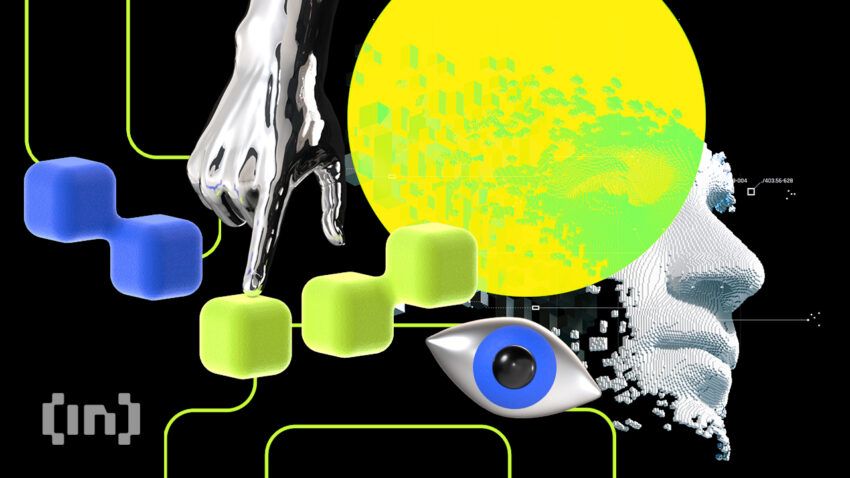BeInCrypto spoke exclusively to Lex Sokolin, the Chief Cryptoeconomist at ConsenSys, about how bullish he is on Ethereum, the future of AI in Web3, and more.
Lex had always been interested in finance and economics, which makes sense considering his role at ConsenSys as Chief Cryptoeconomist. But it wasn’t until after some time at Wall Street and running his own company that he dived head-first into crypto. “In 2017, I started tracking ICOs and doing analytics, figuring out what the whole thing meant, and got really engaged with the Ethereum thesis.”
By that point, he knew of ConsenSys, and after selling his company, he had the opportunity to work with them in 2019. Primarily helping the company figure out the FinTech digital asset approach. Or “blockchain for financial services,” as he puts it.
Lex describes the beginning of his ConsenSys journey as somewhat naive. Their thought process was often, “let’s put blockchain into it, and everything will be better. But, you know, we built a whole bunch of financial services, digital asset products.”
ConsenSys and Building With Ethereum
His company, ConsenSys, develops applications and utilities for Ethereum. Its founder, Joe Lubin, was a co-founder of the network. Unsurprisingly, Lex thinks of Ethereum as the infrastructure of Web3. But what first caught his eye about the project? “The craft of creating is really seductive to me,” he says.
“The Bitcoin story is that: the world will burn, but we are the robot money that will survive. It’s a trade against sovereignty. And that’s very compelling for some people. For me, there’s just not enough to do there. Whereas for Ethereum, the whole story is, in this new space, what can we make? And I really like that. It feels inevitable for me.”

What about the recent boom in AI tokens, which soared at the beginning of the year? Is there much behind that phenomenon? Or was the market simply excited by the new kid on the block(chain)?
Sokolin tells me that AI and blockchain are largely independent and unrelated to each other. “I think they’re orthogonal vectors. They express very different things.”
For its users, blockchain and Web3 are often seen as responses to both big tech and big finance. However, the sudden surge in the popularity of AI may have opened up another clear frontier for blockchain. The fight against big data.
AI: The Original Sin Of The Internet?
Sokolin is certainly of this school of thought. “For me, AI is the maximal Web2 outcome,” he says. “Because it’s built on massive internet data being free, you can’t have generative AI without having the original sin of the internet —the theft of content.”
Anyone who has used ChatGPT or the latest image generation tool will have been presented with this ethical dilemma. Fundamentally, AI enables the creation of an endless amount of free content. All of it is based on someone else’s work somewhere along the line.
We’re starting to talk more about the problems AI poses, and it’s likely to end up in the courts. In January, three artists filed a class-action lawsuit against three AI imagery generators, Midjourney, Stable Diffusion, and DreamUp, for allegedly using their copyrighted artwork without permission, compensation, or credit.
The generators all use laion-5B, a database of over five billion images from the internet, including artwork from various artists. Their claim is that each time an image is created using their name, it is fundamentally a derivative work.
Blockchain is different, he says and represents a fundamental restructuring of the building blocks upon which the internet is built.
“It’s ownership and economy-oriented, right?” he says. “You have digital scarcity of goods, including songs, pictures, or objects. Everything is scarce instead of infinite. It’s a different economic model. And it’s not to say that it’s better. It’s just something that was missing. It’s putting a human economy back into the internet.”
“The Most Important Thing Is The Experiment”
I ask about his view on the recent boom in AI tokens. Are there any fundamentals there? There is a pregnant and definite pause. “I’ll try to find a nice way to answer that.”
According to him, Web3’s competitive advantage is its ability to conduct observable experiments quickly. Although the experiments may not be strictly scientific, the data is readily available, and results can be achieved rapidly.
“We’ve managed to recreate like 3,000 years of financial crises in about five years. So, every single thing that humans behaviorally get wrong, we’ve rushed through that at a very accelerated pace. And you could say, well, you shouldn’t have done it, and we already knew and blah, blah, blah, but at the end of the day, this is a new space.”
“So I think, whether it’s AI tokens, or whether it’s gaming or any of these things, the most important part is just the experiment. I think, a priori, it’s almost impossible to get things right, especially with tokens.”
But if I were pressed on it, I would say it’s very unlikely that the first version was right.”
Disclaimer
Following the Trust Project guidelines, this feature article presents opinions and perspectives from industry experts or individuals. BeInCrypto is dedicated to transparent reporting, but the views expressed in this article do not necessarily reflect those of BeInCrypto or its staff. Readers should verify information independently and consult with a professional before making decisions based on this content. Please note that our Terms and Conditions, Privacy Policy, and Disclaimers have been updated.


